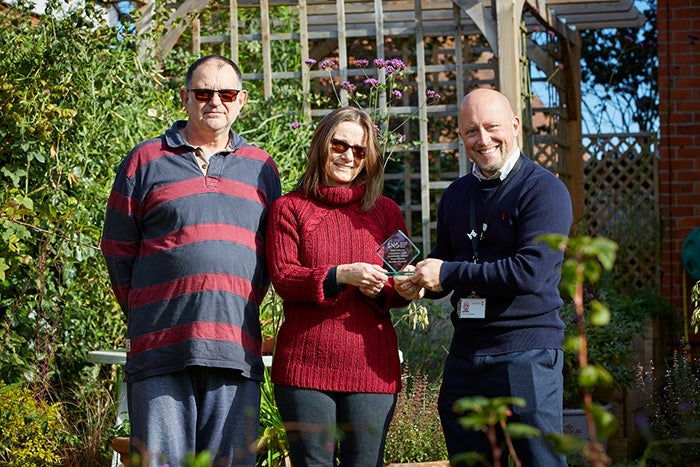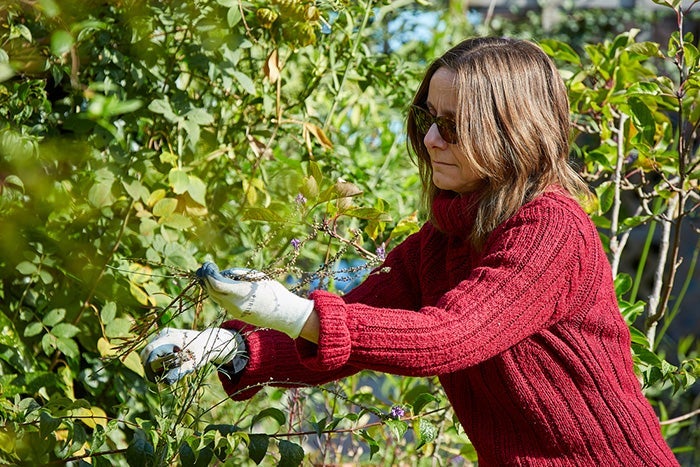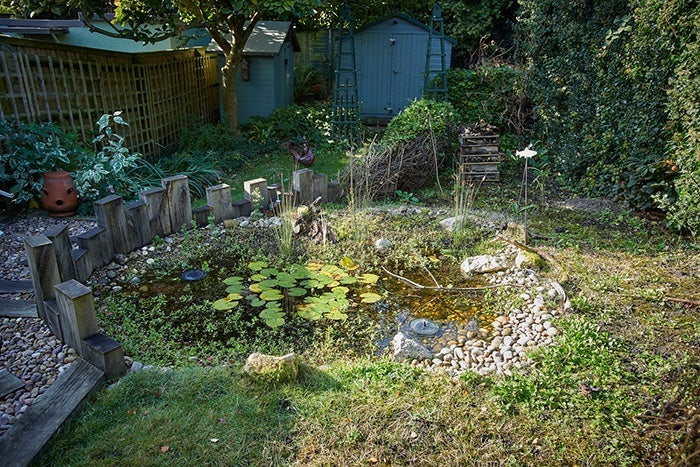
My wildlife garden
Michelle Plummer lives in Berkshire with her partner Graham, and won first prize in the 'Sustainable garden' category of the SNG In Bloom competition in 2024.
The judges said: “This garden is a fantastic example of sustainability! We love the use of the different hedges, the beautiful ponds, and the wildflower meadow to promote habitats for different wildlife. The inclusion of the bird and bee boxes as well make this a great, environmentally friendly green space."
Here Michelle explains where her passion comes from and how she's developed her own garden: with lots of ideas we can all adapt for 'going green' with our outside space.
I have had an interest in wildlife since I was young, but I didn't get into gardening until I had a garden of my own to tend. The garden I have now is well established with a number of native plants. About 5 years ago I decided I wanted to make it more wildlife friendly. This was prompted from watching various programmes about gardening and wildlife, and reading about wildlife gardening and rewilding.
Here are some of the things I was made aware of:
- The UK has lost over 97% of its flower meadows over the last 100 years.
- The UK has lost over 50% of its ponds over the last 100 years.
- The UK is one of the most nature depleted countries in the world.
Hearing news like this really worried me, so I wanted to do something about it.
I found out that UK gardens cover around 1,801,151 acres of land - which is larger than the total area of all the country's nature reserves combined! So, if we can all garden in a more environmentally-friendly way, we can create habitat for wildlife and, ultimately, a network and larger space with all our gardens working together.
One positive thing is that nature is quick to adapt and if we improve the habitat we can expect to see changes in a relatively short space of time.
The first most important thing you can do is to stop using weed killers and pesticides. I previously used both a Spring weed and feed and an Autumn weed and feed on my lawn. I stopped about 5 years ago, and the lawn has now found its own balance and looks better than it ever did.
By using pesticides you are not only killing the pest you want to remove, but also other creatures that live alongside it, and anything that will eat the pest. Nature will in time redress the balance. In my garden, I think of the birds as pest control. I will often see the Blue Tits and Great Tits going around the plants, looking for insects.
I don't put food out for the birds in feeders but I do plant things that will provide seeds and berries for them - and I will leave stems with seed heads on plants through the winter. I know it's very easy to tidy all the borders in Autumn, but by doing this, we remove a lot of food for the birds and other creatures as well as removing cover for insects over the winter months.
We have a large hedge down one side of the garden which is made up of mainly holly, hawthorn and ivy. At one time I would have pruned the whole thing in early Autumn, now I prune half one year in January/February, then do the other half the following January/February.
By leaving any cutting until after Christmas, I am allowing time for the ivy to flower in Autumn, which is a vital source of nectar for pollinators late in the season - and then the berries are available for the birds and mammals of the ivy on the whole hedge. By only cutting half the hedge each year I am also allowing the likes of hawthorn to flower and fruit as they only do this on the previous year's growth.
When it comes to clearing leaves in Autumn, I used to clear them from everywhere and either put them in the green bin or on the compost heap. Now, I only clear them from paths (where they can be a slip hazard) and grass (where they can cause the grass to die off). All leaves that have fallen on the borders I leave - they act as a mulch and the worms and other creatures break them down to improve the soil.
The leaves I collect from the paths and lawn either go on the borders, on the compost heap or I stuff them under the hedges to create habitat for other creatures. I saw hedgehogs just as it was getting dark last Summer and, as they can travel over a mile in one night, I like to think that the leaves I left under the hedge encouraged them to use our garden as a home and they had just woken up when I saw them.

About 4 years ago I turned a small section of our lawn into a mini wildflower meadow. I researched native species to plant that were good for pollinators. This has provided more habitat and therefore more pollinators. It has evolved each year as different flowers have matured. Once this starts growing in the Spring, we don't cut it back until the Autumn. (Even then I will still leave a patch long, so there are seeds for the birds and cover for insects over Winter.) We have seen and heard crickets and grasshoppers and the number of ladybirds has increased. I also have plans to add things like daisies, clover and self heal to another area of grass to create a flowering lawn. This will be trimmed more often throughout the Spring and Summer, but will then provide another habitat.
Nearly 2 years ago we put up some solitary bee boxes. During 2023 we had leafcutter bees using the boxes and, during 2024, we also had mason bees.
A couple of years ago we built a wildlife pond. It was something I'd wanted to do for a long time, and this has to be one of the best things we have done in the garden for wildlife. Within a few weeks we were seeing pond skaters, water boatmen, diving beetles, dragonflies and damselflies. We regularly have a drink or meal by the pond throughout Spring and Summer, just to watch the wildlife. Some of the highlights have been:
- Seeing dragonfly nymphs leave the pond and emerge from their exuvia (the outer casing they shed) as adult dragonflies.
- Having newts breeding in the pond over the last 2 years.
- Having a southern hawker dragonfly land on my leg.
- Seeing dragonflies and damsel flies laying their eggs.

Just over a year ago we created a 'dead hedge'. We had a number of branches and other twigs and I wanted to provide cover for smaller creatures to get to the pond from an existing hedge, so we built a dead hedge between the two. You just need to push some bigger branches into the ground in two opposite rows: about 45-60cm apart and at 1m spacing between branches in each row. You can then start piling up the twigs and smaller branches into the framework. Over time, the twigs and smaller branches will break down but you can keep adding more. You can also plant a native climber like honeysuckle to grow through the dead hedge.
Early last year we put up some bird boxes and we were very lucky to have a couple of blue tits take up residence - and even luckier to see their young fledge one morning in late May.
I think if you can create different mini habitats in your garden, you will attract more wildlife. I am always thinking about what else I can do to make a difference. Going forward I want to plant things that flower earlier and later in the year so that the pollinators have food for a longer period of time.
Nearly every time I go out in the garden, I am guaranteed to see something and - even if it is only a small difference I am making to improve things - I feel that it's an important thing to do and if I can encourage others just a little, then that is a step in the right direction.
Even in a small space you can make a difference: growing a pot of birds foot trefoil or calamint will attract the pollinators.

